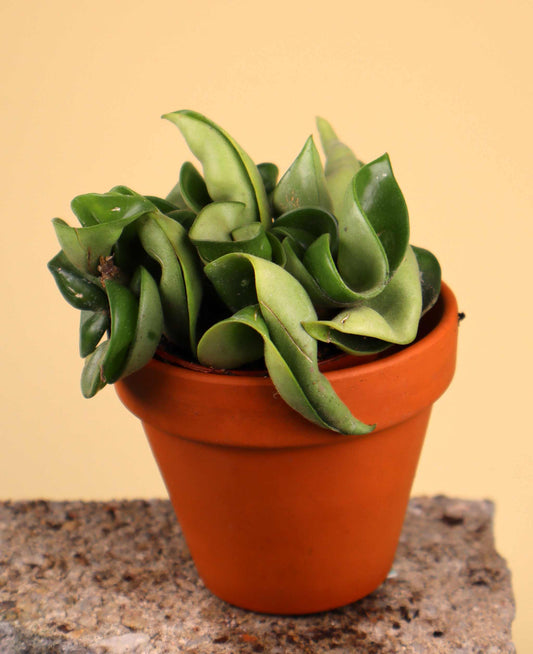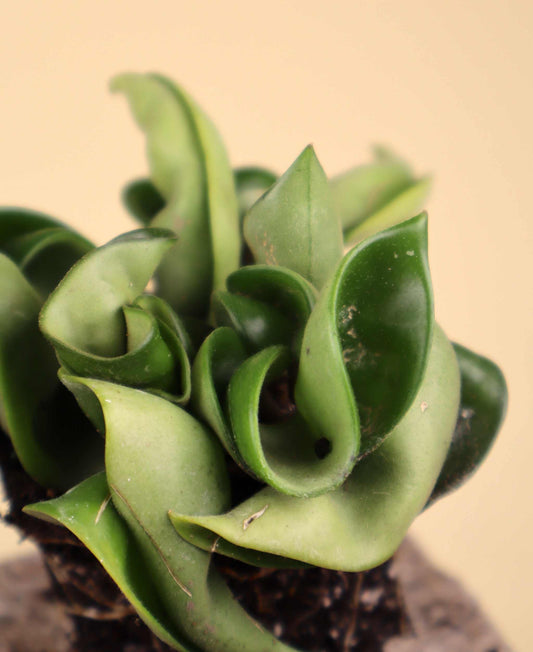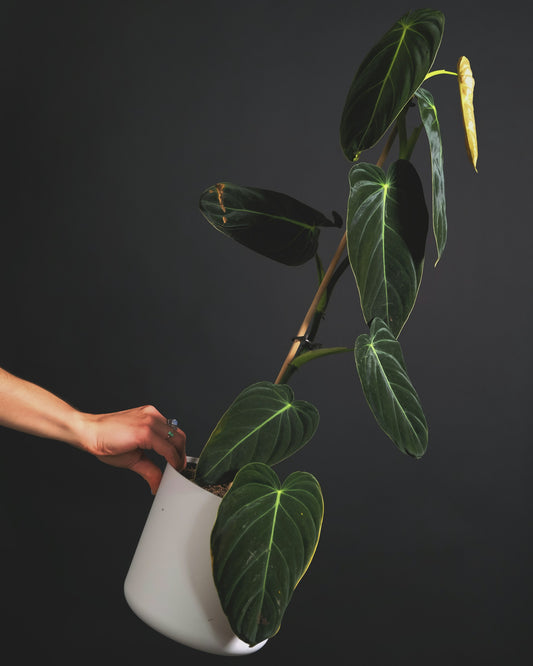Share
What is a Hoya?
The porcelain flower belongs to the porcelain flower genus, Hoya , which consists of 565 accepted species. Hoya is originally from the tropical and subtropical parts of Asia and was introduced to the Western world by the Scottish botanist Robert Brown. The name "hoya" comes from Thomas Hoy, an 18th century botanist who studied these fascinating plants. The porcelain flower is durable and easy to care for. All of these qualities make it a favorite among easy-to-care-for indoor green plants .

Hoya's natural range is in tropical Asia and the western Pacific region
Hoyas are characterized by their deep green, waxy leaves and their star-shaped flowers that are often white, pink, purple or red. The flowers are not only decorative, they also spread a pleasant fragrance, especially in the evenings. With the right care, a Hoya can become a long-lived flowering houseplant that will last for many years.
Brief botanical information about Porcelain Flower
Hoya is a genus of about 565 species of tropical and subtropical, lianas and shrub-like plants. They originate from Asia and the Pacific Islands and grow naturally in rainforests, on coasts and on rocks. Hoya can grow as epiphytes, where they attach themselves to other plants, or as terrestrial plants.

Hoya callistophylla , originally from the rainforest of Borneo and endangered in the wild.
The leaves of the porcelain flower are simple, often thick and succulent. They vary greatly in size, from as small as one centimeter ( Hoya engleriana ) to as large as 25 centimeters (Hoya latifolia ) . The shape of the leaves is equally diverse: some are round ( Hoya obovata ), others narrow and linear ( Hoya linearis ), or heart-shaped ( Hoya kerrii ). Some have leaves that look almost prehistoric, such as Hoya callistophylla .
The flowers of Hoyas usually grow in clusters on perennial inflorescences, called spurs, which are lengthened each time the plant blooms. Many species have fragrant flowers and sometimes produce large amounts of nectar.
Each flower has a star shape, typical of porcelain flowers, with five thick, triangular petals and a central structure, which contains the flower's reproductive organs.

The popular houseplant Hoya bella has been described as an “amethyst in frosted silver” by William Hooker, the first director of the botanical garden, Kew Gardens in England.
Hoya pollen is packed in small, sticky pollen sacs that easily attach to pollinating insects such as moths, flies and ants. In the East Asian species Hoya carnosa, pollen sticks to the legs of moths as they search for nectar among the flowers.
Where should Hoya stand?
The porcelain flower thrives best in indirect sunlight. Bright, filtered sunlight is perfect, but this tropical plant can also survive in slightly shadier environments, Hoya is one of the plants that does not need direct light. However, avoid too much bright sunlight, which can burn the delicate leaves. However, to get your Hoya to bloom, it is important to have enough light, so place it in an east or west window.

Hoya wayetii placed in bright indirect light. Originally from the Philippines (Northern Luzon)
How often should you water Hoya?
When it comes to watering the porcelain flower, less is often more. Let the soil dry out between waterings, especially during the winter months. In the spring and summer, you can water every two to three weeks. Use room temperature water and avoid overwatering – Hoyas are susceptible to root rot.
Hoya prefers high humidity, at least 60%, making it perfect for bathrooms or kitchens where the air is often more humid. If the air in your home is dry, you can spray the leaves with water to increase the humidity.
What type of soil for Hoya plants?
Hoyas thrive in well-drained, nutrient-rich soil. A peat-free potting soil mixed with perlite or orchid soil works great. Repot your Hoya every three years or when the plant has outgrown its pot. Choose a pot that is only slightly larger than the old one – hoyas thrive when their roots are crowded together.

Originating in In Vietnam & the Malacca Peninsula, Hoya erythrina is best known for its deep red flowers, which gives rise to its name. 'Erythrina' means 'red' in Greek.
Pest on Hoya
The porcelain flower is a hardy flower that rarely suffers from problems, but it is important to keep an eye out for pests such as thrips or spider mites. Use beneficial insects or biological pesticides if you spot pests. Beneficial insects are small natural predatory insects and come in small bags that you simply hang on the plant. They crawl out of the bag over several weeks and hunt pests on your houseplants. You can read more about our beneficial insects and buy them with free shipping here .
Why isn't my Hoya blooming?
Lack of light is one of the main factors you can influence to get your Hoya to bloom. If you have a mature plant that still doesn't bloom and you feel like you've tried everything regarding care. Try placing the Hoya in a sunnier location or buy a grow light that provides extra light for the plant.

Another common reason why Hoya does not bloom is that the plant is simply not mature . Sometimes it takes up to 7 years for Hoya to bloom, if you have a small plant you need to be patient.
Too much water can also cause a lack of flowering. Hoya likes to dry out between waterings and wet soil for too long causes root rot in Hoya. As long as the roots are not healthy, plants generally will not flower.
Why are the leaves turning yellow? Overwatering is the most common cause. Let the soil dry out thoroughly between waterings.
Propagation of porcelain flower
Taking cuttings from porcelain flower is easy and fun. Choose a cutting with at least two nodes (the lump on the stems where leaves grow from) and place the cutting in water or moist sphagnum moss . Once the roots have developed, you can plant the cutting in a well-drained soil mix. Then place the Hoya cutting in a bright spot and keep the soil lightly moist.

The picture shows the nodes (the lumps where roots and leaves emerge) that must be included when taking porcelain flower cuttings.
Hoya's relationship with ants.
Some species, such as Hoya imbricata from the Philippines and Sulawesi, cooperate with ants. This porcelain flower climbs tree trunks using aerial roots, and its round leaves overlap slightly, like roof tiles. Under the slightly concave leaves, ants find shelter and create hidden passages to move up and down the trees. The hoya benefits from this cooperation because the ants leave behind organic matter that acts as a nutrient for the plant.
In other words, Hoya is not only a beautiful and versatile plant, but also a biological partner in its natural environments.
Why are porcelain flowers so popular?
The porcelain flower is a perfect balance between entertainment and ease of care. It is both a hardy flower and an exotic plant that adds a tropical feel to your indoor garden.

Hoya linearis is known for being an extremely easy-to-care-for houseplant that can also withstand some cold.
Hoya, an easy-care plant with fragrant flowers.
With its long-lasting blooms and easy care, the porcelain flower is a fantastic choice for any plant lover. Give it some love, and it will reward you with the most beautiful blooms and a tropical feel to your home.
If you want to buy hoya online or order porcelain flower cuttings, there are many opportunities to find both cheap and unique specimens of this popular houseplant at Ferns.











